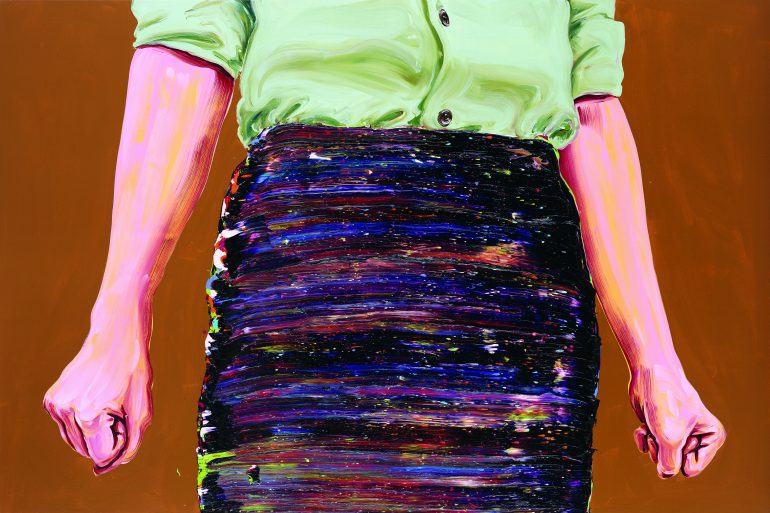Museum MORE will be showing around 100 masterpieces by German painter Cornelius Völker (1965). Things You Shouldn’t Paint is his first oeuvre exhibition in a Dutch museum and is put together in cooperation with the Kunstpalast in Düsseldorf. Discover the way in which Völker gives glamour to everyday subjects with deliberate brush strokes.
Guts
There are no taboo subjects left in art. Nevertheless, German painter Cornelius Völker stretches the boundary with images of things that appear mundane, but are not usually seen. Objects that according to the ‘norm’ would not deserve special attention. In his paintings, Völker immortalizes such things as shiny guns and bloody tampons. He depicts guinea pigs like pop stars and picks balding men as central figures. Things you shouldn’t really paint. In virtuoso fashion, the artist carefully strokes oil paint across his canvases, lifting his subjects to unprecedented heights.
Exploration
Cornelius Völker has been living and working in Düsseldorf for more than 30 years and in those three decades, he has built a reputation as one of the most outstanding figurative painters of his generation in Germany. Whatever he chooses as subject matter, Völker’s paintings are essentially a continual exploration of time. His paintings are about the appearance and disappearance of things.
Frozen in time and space
For example, he has painted numerous clouds dissipating and dispersing. They do not blow away, but seem to be suspended in time and space. Their fragile, enigmatic presence is enhanced by his colour schemes: confusing orange and purple hues rather than clichéd, sheep-like, white clouds in a clear blue sky. Isolated from a visible environment, Völker’s subjects appear almost abstract. The artist knows his classics but gives them a 21st-century twist. A pop-art-like square chocolate bar fills the canvas. Is that a pool of blood or tomato ketchup that he has depicted like a still from a thriller movie?
Fading beauty
Völker’s unique approach to contemporary subjects, make for a thrilling viewing experience. His masterfully-executed paintings – often in large format – add glamour to seemingly unsightly items. The mundanity of dirty stains on a table or crushed fruit, challenge the viewer. His magisterial rendering of materials and light reflections can catch the viewer off guard. A pair of red lips takes on monstrous dimensions. A pile of books grows to the size of an imposing mountain. A bloodied tampon or used plasters are as meaningful as the beautifully wilting flowers that Völker also paints. The works revolve around existential themes, the fragility and transience of (human) existence. Völker manages to breathe new life into these old themes by placing his subjects loud and clear on the canvas.
Völker not only seeks the contrast between what is supposedly allowed in art and the context he captures his subjects in, he also constantly experiments on a technical level. His fascination for the possibilities offered by paint is one of the driving forces behind his artistry. He tries his hand at all the extremes. Sometimes Völker whirls his brush in a dramatic choreography, then again in subtle movements. With sensually thick paint strokes or, on the contrary, transparent, delicate layers of paint, he searches for the maximum achievable as a painter. He ususally works on flat canvases – not on an easel – so that he can keep the working process under control and paint doesn’t accidentally drip downwards. The results are colourful, expressive paintings that offer a new, modern interpretation of traditional figure studies and still-lifes.
Cornelius Völker
The artist lives and works In Düsseldorf, where he studied at the leading art academy. His teachers included the legendary A.R. Penck and Dieter Krieg. Since 2005 he has also been a professor of painting at the Münster Art Academy. For about ten years he had a studio in New York and in his current city of residence. Since 2018, he has been a Member of the North Rhine-Westphalian Academy of Sciences, Humanities and the Arts. Völker has won several awards and exhibits frequently in the United States in addition to his homeland.
Until 23 June
www.museummore.nl
